Beezantium: A Lakeside Apiary in Somerset by Invisible Studio
Set on the edge of a lake adjacent to a quaint stacked-stone wall, a strange wooden structure hovers several feet above the water. Its facade is covered in thin, peeled vertical logs, its copper-clad roof rising in an unusual curved shape. If you were to pass it by day, you’d only see the reflection of the landscape in the huge floor-to-ceiling window facing the water. But at night, when the structure is illuminated from within, its unusual interior is exposed: giant honeycomb shapes filled with bee-related imagery, and pod-like seating reminiscent of egg sacs.

Completed in 2021 by Invisible Studio, “Beezantium” is a fun project acting as an apiary for honeybees on the grounds of The Newt in southwest England’s Somerset hotel. Hives built into its walls accommodate the buzzing insects, which are visible from inside through panes of glass. But the structure also serves as a wildlife center for visitors, creating a warm and welcoming atmosphere lined with polished honey oak. The educational showcase inside was created in collaboration with Kossmanndejong, an Amsterdam-based design agency.

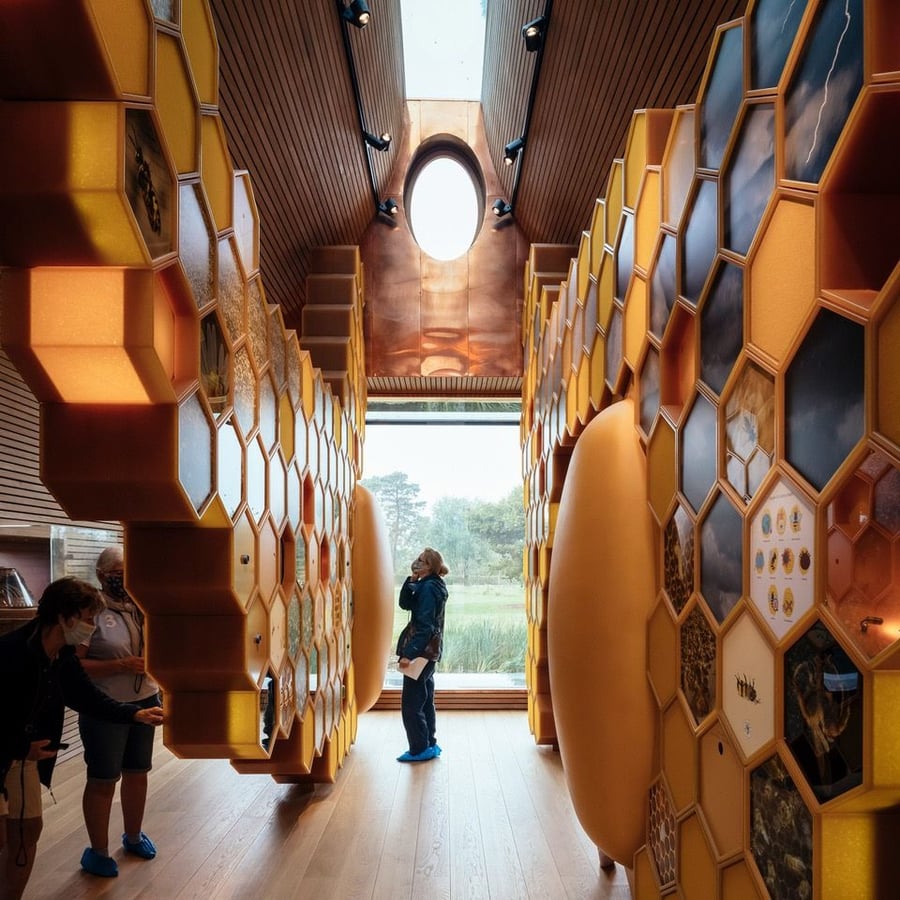
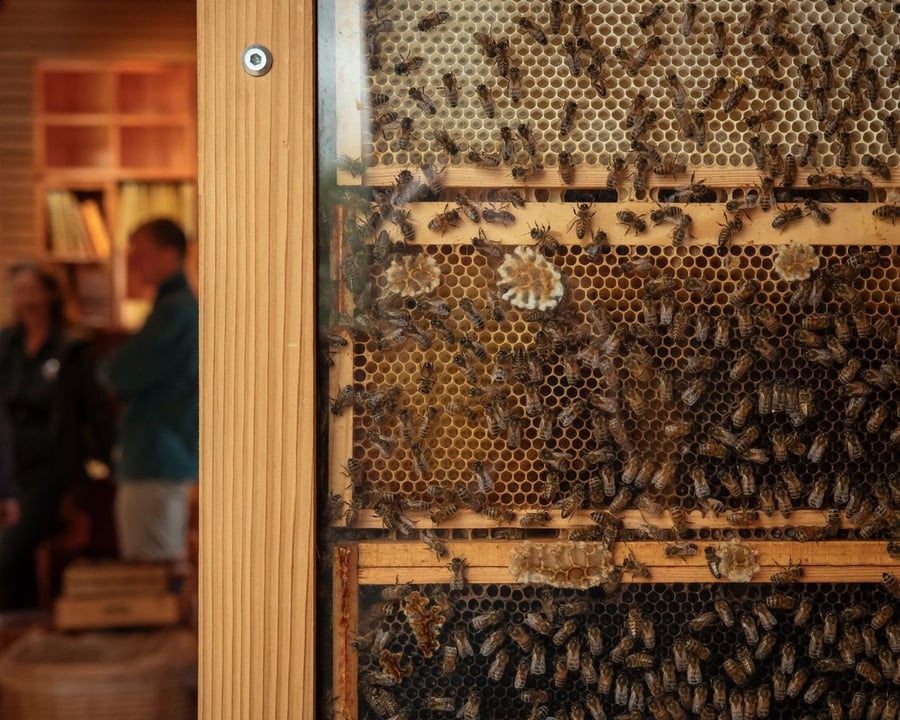
The whimsical design of the exterior takes inspiration from traditional “follies,” strikingly ornate buildings commonly seen in English and French landscape gardening that are purpose-built as ornaments. Not having a purpose is part of the point, actually. Beezantium’s unusual silhouette, fish scale-shaped copper roof tiles, two oval windows, and raw cladding pay tribute to these structures, but it’s not just for decoration. Nearly every feature aims to draw in bees of all kinds.
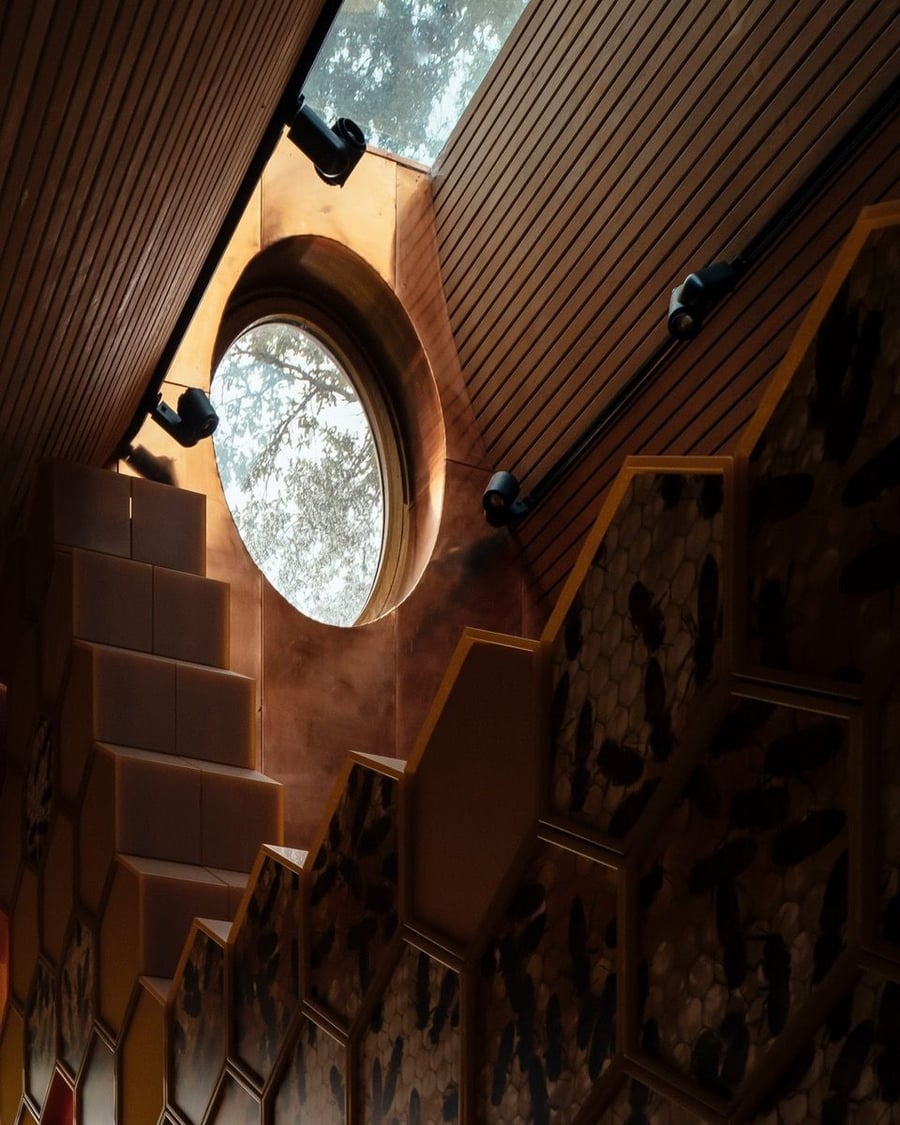

The oversized timber panels are made of unseasoned oak, which allows the bees to enter their hive either through natural holes or copper pipes built into the structure. Beekeeper Paula Carnell consulted on the project to make sure it would be welcoming not just to the honeybee hives relocated to the apiary, but to wild bees, solitary bees, and other species, as well.
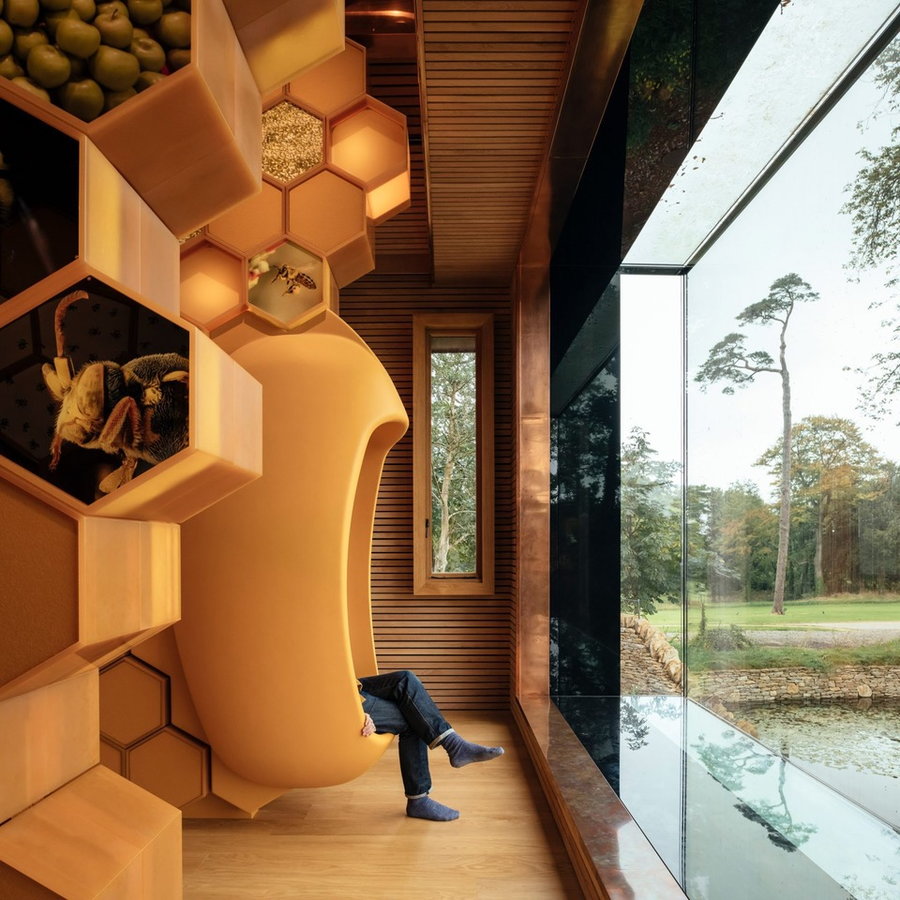
From far away, the apiary looks much smaller than it really is. It’s not until you enter that you realize its true scale, with a copper-lined ceiling that rises all the way to the peak of the roof. The exhibits and seating inside were arranged so that you wind your way through, taking it all in before reaching the final reward: the view. Invisible Studio designed the picture window so it juts out from the wall, its glass floor offering a view straight down into the water below.
Best of all might be the fact that the architects successfully crafted this lovely attraction on such an unlikely site. Occupying a former landfill, the apiary certainly makes better use of the lakeside location.
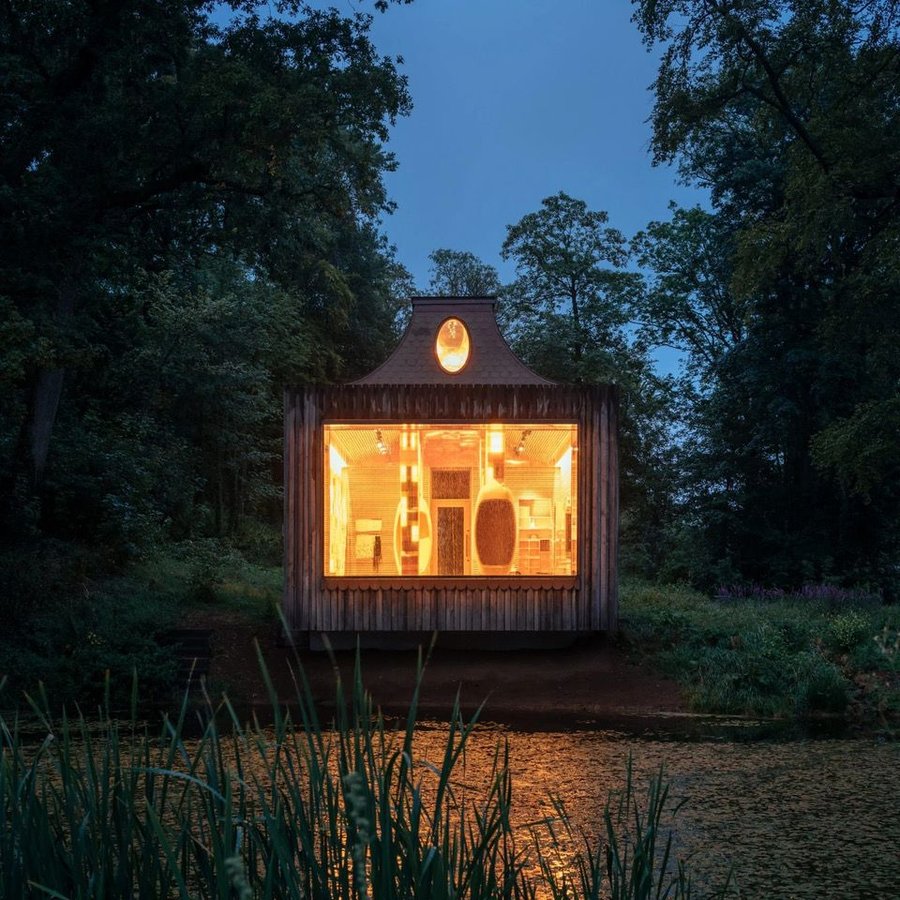
“The Beezantium has been designed to provide a sensory, otherworldly experience,” says Piers Taylor, director of Invisible Studio. “It appears jewel like, quirky, and playful – almost like a folly in landscape with a glowing copper roof, but instead of being only about pleasure, the Beezantium is a purposeful building designed to house bees in observation hives in the external walls, that can be viewed in a range of habitats internally. There is a huge extraordinary interactive and immersive exhibit that describes the world from the bees’ perspective, that is hung from the ceiling and contained within a honeycomb structure, enabling visitors to understand bees and their place in the world.”




